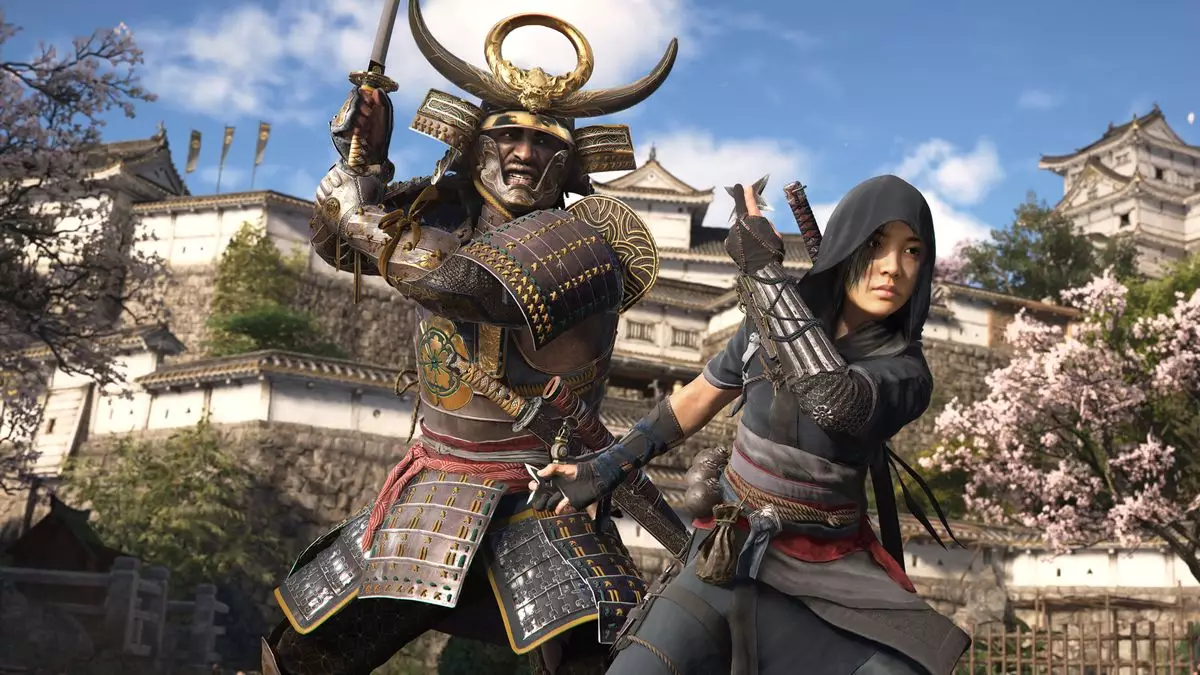The latest installment in the Assassin’s Creed franchise, Shadows, introduces a fresh take on the dual-protagonist system. Players will alternately assume the roles of Yasuke and Naoe, two characters that exemplify contrasting approaches to combat. Unlike previous games where players might pick between male and female avatars from the outset, Shadows offers a nuanced experience that highlights the strengths and weaknesses inherent to each character’s fighting methodology. This design choice emphasizes the adaptability required of players as they navigate through various gameplay scenarios, prompted to switch characters based on the challenges faced.
Distinct Yet Interconnected Combat Mechanics
Director Charles Benoit elucidates that while Yasuke and Naoe share core combat mechanics, including swift light attacks, powerful heavy attacks, and defensive movements, each character’s fighting style diverges significantly due to their unique backgrounds as a samurai and a shinobi, respectively. Yasuke commands the battlefield with hefty weaponry like the katana and rifles, capitalizing on his physical presence. In stark contrast, Naoe operates with elegance, favoring stealth tools like the hidden blade and employing a ball-and-chain for area control. This distinction is not merely aesthetic but forms the crux of their respective combat efficiency. For example, Yasuke’s ability to block attacks using his massive weaponry showcases a form of brute strength, while Naoe relies on agility and well-timed evasion, reinforcing their character archetypes.
Beyond the overt differences in weaponry, Benoit speaks to the subtleties that render these characters’ controls unique. Yasuke’s sheer size lends itself to more straightforward defensive tactics, as he can absorb hits from enemies due to his stature. Naoe, however, compensates for her size with swift movement, including a nimble dodge-roll that allows her to navigate combat scenarios with finesse. This variety in mechanics encourages players to adopt different strategies, adapting to their personal playstyles and the specific challenges presented in the game.
Intriguingly, Shadows incorporates an element of world-building through enemy behavior, responding distinctly to each character. Against Ashigaru soldiers, a bulk of the game’s foes, Naoe encounters aggressive attacks, while Yasuke instills a sense of dread, prompting enemies to retreat. This contrast could stem from multiple factors, such as size and combat style, as well as the implications of gender within the game’s universe. Such design choices enhance immersion, prompting players to creatively approach stealth mechanics when controlling Naoe.
Assassin’s Creed Shadows stands out by reimagining how players engage with its combat mechanics and character interactions. By focusing on both distinctions and commonalities between Yasuke and Naoe, the game invites players to explore and experiment, adding layers of strategic depth that breathe new life into the franchise. Shadows not only promises a compelling narrative but also offers a vibrant, dynamic combat experience that holds the potential to captivate fans both old and new. The melding of character-driven gameplay with intricate mechanics sets a promising precedent for the future of the franchise.


Leave a Reply